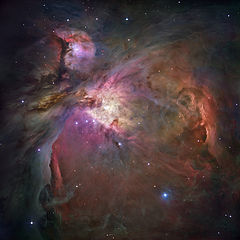
Evolutionary Science suggests that humans have existed for nearly 2.5 million years. Stars, however, usually take tens of millions of years simply to be born. While this may seem like a long time to us, it is actually relatively short in astronomical terms.
The two main ingredients in star formation are interstellar molecular clouds and gravity. Interstellar molecular clouds are dense interstellar regions filled with hydrogen, helium, and other elements. These ingredients go through the four complex phases to create a star.
The first phase of star formation is the protostar phase. In this phase, molecular clouds are converted into protostars. Molecular clouds contain knots or cores that are dense and have a strong gravitational pull. After approximately one million years, these knots will have sucked in surrounding material with weaker gravitational pulls, thus creating a big, stellar cluster known as a
globule
. Globules are thick, dark, roughly spherical, and measure 60,000 astronomical units (AU) across. To put this in context, one astronomical unit is equivalent to the distance between the earth and the sun. In the center of the globule, a warm mass the size of the solar system emits strong infrared radiation. This mass, known as a
protostar
is the main basis for the young star.
The next phase of star formation produces a
proplyd
. As more and more material is drawn into the center of the globule, it begins to flatten out. One could compare it to a ball of pizza dough; when it is tossed and spun in the air, it becomes flat and is used for crust. The flattened globule, now called a protoplanetary disk, or proplyd is 100 AU across, with the protostar—1 AU in diameter—in the center.
After approximately one million years, the protostar shrinks and becomes what is known as a
T Tauri
star. When a T Tauri star is formed, it begins to spin and its magnetic properties attract nearby gases and suck them in along magnetic field lines. This intense magnetic activity causes massive flares and large spots to form on the star's surface, which scientists can then use to identify the stars as T Tauri ones.
In the last phase of star formation, known as the
bipolar molecular outflow phase
, the T Tauri star absorbs material along its magnetic field lines and expels other material. The expelled material forms two particle beam jets on opposite sides of the star; this phenomenon is known as bipolar molecular outflow. This stage lasts for 10,000 years, but it takes another few tens of millions of years before the T Tauri star is able to initiate hydrogen fusion in its core. After reaching the hydrogen fusion stage, what began as a cloud of molecules is now a newborn star.
Star formation can also be the source of other important astronomical objects. Proplyds, the flattened molecular clouds surrounding protostars, are thought to be infant planetary systems. Scientists also indicate that the dust and gas in the proplyds eventually becomes planets that will orbit the new star. Also, during the star's bipolar molecular outflow stage, the beams from the forming star can hit surrounding interstellar gases, which in turn light up, forming gorgeous nebulae known as
Herbig-Haro objects
.
The entire process of star formation is magnificent and beautiful. Unfortunately, because the entire process lasts far longer than any human life, we are only able to see snippets of a star’s creation.
[Source:
The Illustrated Atlas of the Universe
]

